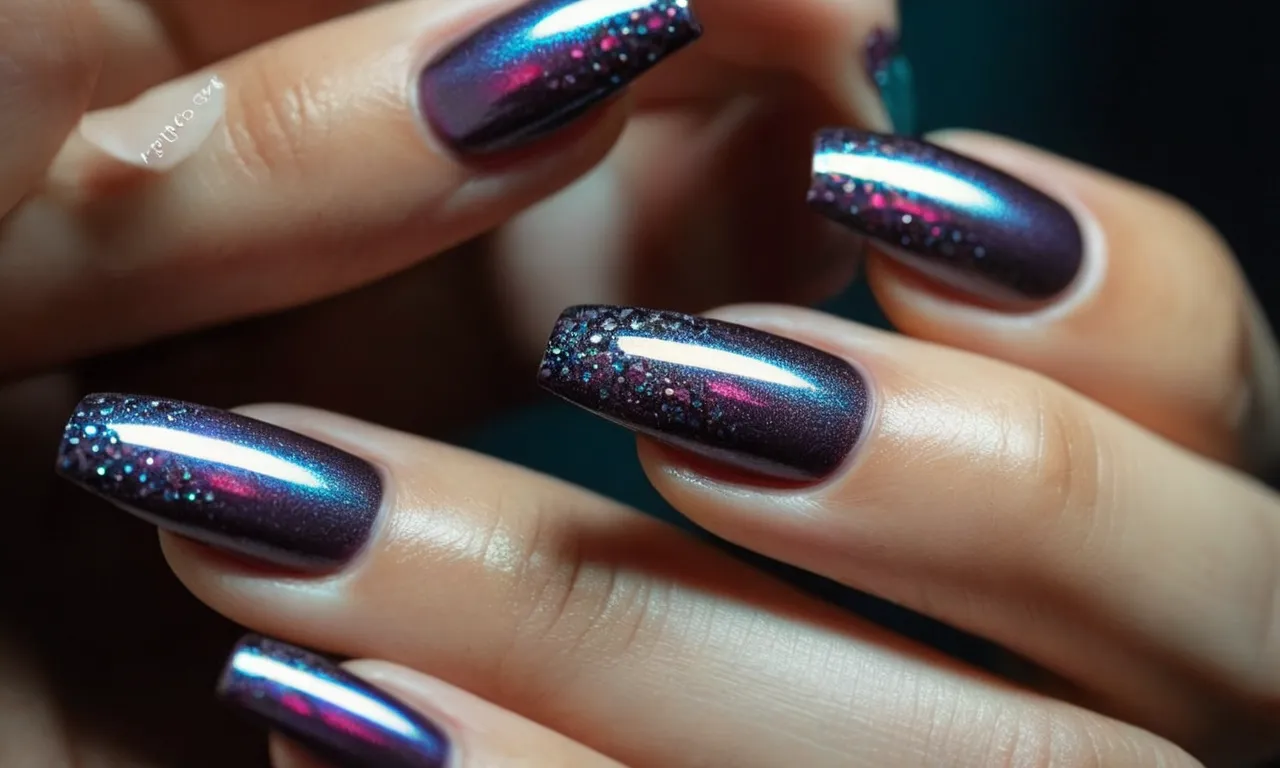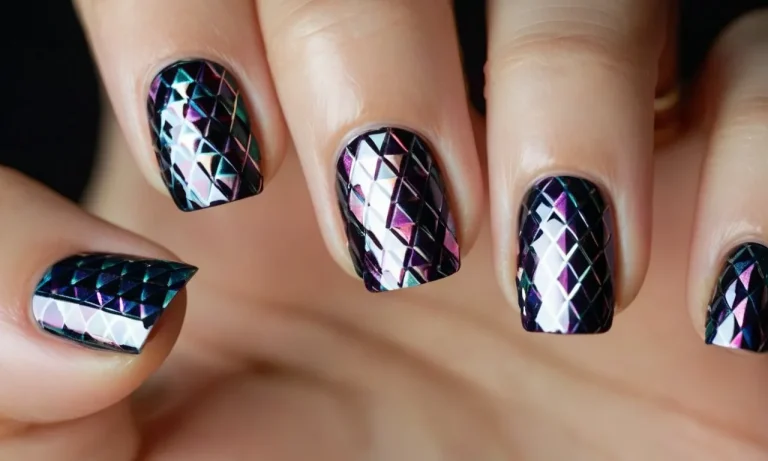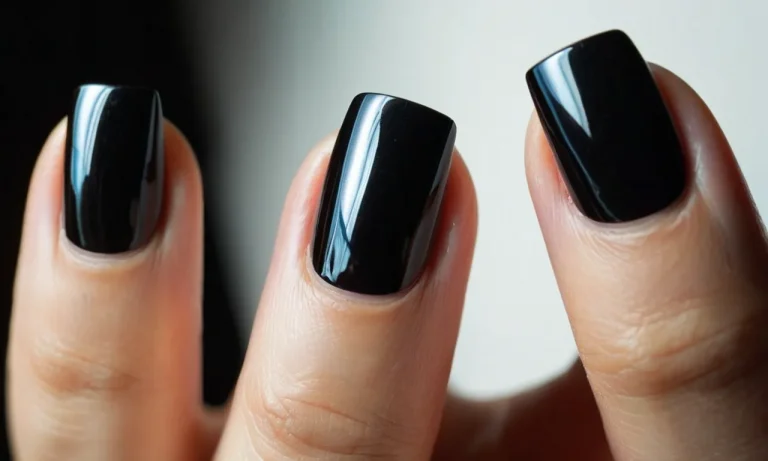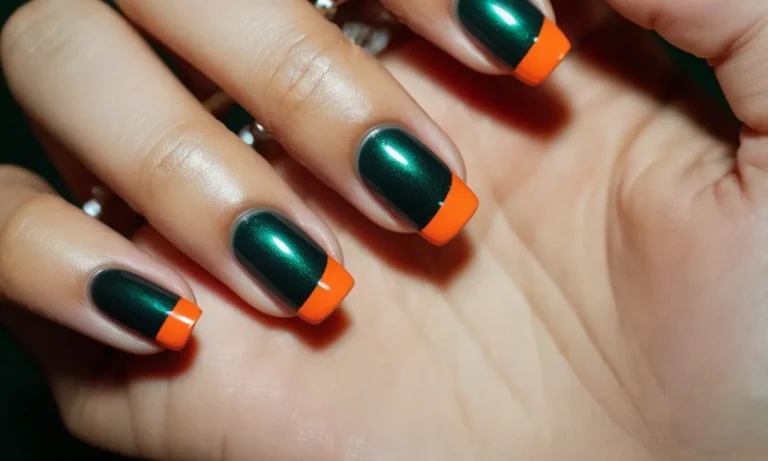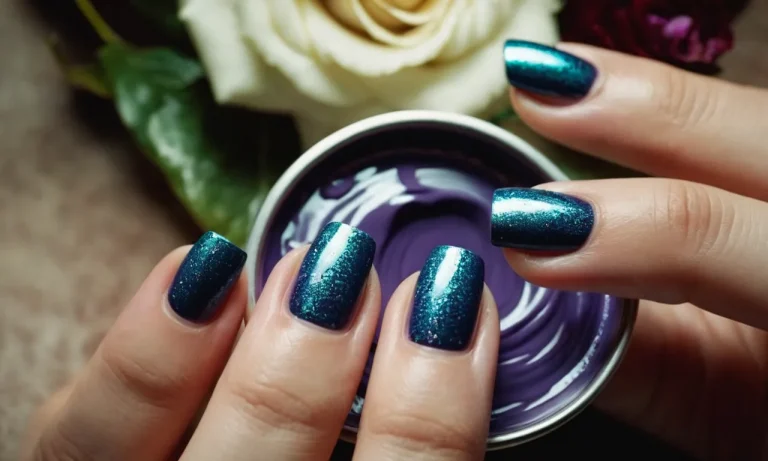Do Gel Nails Last Longer Than Acrylic Nails?
If you’ve ever gotten a manicure, you may have been presented with options for gel nails or acrylic nails. Both enhance the look of natural nails, but is one type longer-lasting? Keep reading to find out whether gel or acrylic nails have greater durability.
If you’re short on time, here’s the quick answer: gel nails generally last longer than acrylic nails. The average lifespan is 2-3 weeks for acrylics, while gels can last 3-4 weeks before needing fills.
In this comprehensive guide, we’ll compare gel and acrylic nails in depth across factors like application method, longevity, maintenance needs, removal process, and costs. You’ll get the details on how each nail option is applied and the differences in durability over time.
We’ll also cover pros and cons of each type to help you decide whether gel or acrylic is better for your lifestyle and budget.
What Are Gel Nails?
Gel nails are a popular artificial nail option that offers extended wear and a durable, glossy finish. Gel nail polish is made from a blend of monomers, oligomers, polymers, and plasticizers that harden under UV or LED light. Here’s an overview of what gel nails are made of and how they’re applied:
What Gel Is Made Of
The main ingredients in gel nail polish include:
- Methacrylate monomers – These molecules react under UV light to form polymers that harden the gel.
- Polyethyl methacrylate – This helps the gel maintain flexibility.
- Photoinitiators – These absorb light and initiate the polymerization reaction that hardens the gel.
- Pigments – Provide color to gels.
- Thickening agents – Adjust the viscosity of the gel.
Gels also contain plasticizers for pliability and to prevent cracking or brittleness. The most common plasticizer is dibutyl phthalate (DBP). However, some brands now offer DBP-free gels.
How Gel Nails Are Applied
There are two methods used by nail technicians to apply gel manicures:
- Brush-on gels – The gel polish is painted directly on the natural nail in thin layers. Each coat is cured under a UV or LED lamp for 30-60 seconds until hardened.
- Gel nail extensions – Nail tips or forms are adhered to the natural nail edge to extend length. Layers of gel are brushed over the nail and cured to build thickness and strength.
Most gel manicures involve a combination of both application techniques. Gels are very customizable, available in every color imaginable with options like glitter, shimmer, matte and more. Salons offer premium gel brands like OPI GelColor and CND Vinylux for lasting shine and protection.
What Are Acrylic Nails?
Acrylic nails are a popular artificial nail option that consists of a powder and liquid that are mixed together to create a durable, versatile nail enhancement. Here’s an overview of what acrylic nails are made of and how they are applied:
What Acrylic Is Made Of
The main ingredients in acrylic powder are:
- Polymethyl methacrylate (PMMA) – This is a plastic polymer that provides strength and durability.
- Ethyl methacrylate (EMA) – This helps regulate flexibility and hardness.
- Benzoyl peroxide – This initiates the hardening process when the powder and liquid are combined.
The liquid contains monomers such as methacrylic acid and an activator. When the powder and liquid are combined, the mixture begins to harden and polymerize within minutes. This allows the acrylic to be shaped and formed into a nail extension.
How Acrylic Nails Are Applied
Acrylic nail application is usually done in salons by professional nail technicians. The process involves:
- Prepping the natural nail – The nail is filed to rough up the surface and remove shine so the acrylic adheres better.
- Applying primer – A dehydrator/primer is applied so acrylic bonds properly.
- Shaping the tip – A nail form is fitted to the finger and the desired tip length and shape is customized.
- Applying acrylic – The powder and liquid are blended and applied in layers over the nail and form to build the nail extension.
- Shaping – Once hardened, the acrylic nail is shaped and smoothed into the desired look.
- Finishing – The surface is buffed for shine and polish can be applied.
The whole process usually takes around 1-2 hours. Fill-ins are needed every 2-3 weeks as the natural nail grows out and the acrylic lifts at the cuticle area. Acrylics require more maintenance than other options like gel polish or dip powder nails.
Gel Nail Lifespan vs. Acrylic Nail Lifespan
How Long Gel Nails Last
Gel manicures are known for their longevity and can typically last 2-3 weeks without chipping or lifting. The gel polish is cured under UV or LED lamps which allows it to fully harden onto the natural nail. This creates a durable, chip-resistant finish that can last up to 14-21 days on most people.
With proper application and avoidance of nail damage, some people can stretch their gel manicure to last a full month before needing a fill or removal.
How Long Acrylic Nails Last
The lifespan of acrylic nails is quite similar to that of gel nails. Professionally done acrylics can last 2-3 weeks on average before beginning to lift or show growth at the nail bed. The acrylic powder and liquid are blended and sculpted over nail tips or the natural nail and cured to harden.
This allows the acrylic to adhere strongly and have an extended wear time of 14-21 days in general. With infills and proper maintenance, some acrylic sets may last a full month or slightly longer before a complete removal is needed.
Comparing Overall Longevity
When it comes to gel nails vs. acrylics, the longevity is very comparable between the two options. Both can last a solid 2-3 weeks with proper application and good nail care habits. Gel manicures may have a slight edge over acrylics when it comes to chip-resistance thanks to the soak-off gel polish that is applied.
However, acrylics tend to be more durable for length and strength. Here is a quick longevity comparison:
- Gel manicure lifespan: 14-21 days on average
- Acrylic nail lifespan: 14-21 days on average
- Gel pros: chip/crack resistant
- Acrylic pros: strength and durability for length
While gels have an advantage when it comes to resisting tip wear and chips, acrylics hold up better over time for overall nail durability and growth. Both options last considerably longer than a regular polish manicure which may only go 5-7 days before needing a refresh.
With proper home care and salon fill/touch-up appointments, gel and acrylic manicures can be extended 4 full weeks in many cases.
Maintenance Needs: Gel vs. Acrylic
Upkeep Requirements for Gel
Gel manicures require relatively low maintenance compared to acrylics. Since gel hardens under UV light, the polish stays chip-free for 2-3 weeks typically before needing a fill. To keep gel nails looking pristine, most experts recommend getting them refilled every 2-3 weeks.
The good news is that gel reapplications only take about 30 minutes for a fill compared to over an hour for a full gel manicure.
One of the perks of gel manicures is that they do not require much filing or shaping between appointments. Just be sure to use nail products designed for gel, like gel nail polish remover instead of regular polish remover, to avoid damage when taking gels off.
Using cuticle oil daily is also key to keeping the nails and skin around the nails healthy. Overall, gel manicures are relatively easy to maintain compared to other salon enhancements like acrylic or dip.
Upkeep Requirements for Acrylic
Acrylic nails require more maintenance than gel nails. Typically, acrylic manicures need to be completely replaced every 2-3 weeks to maintain their appearance and structure. That means filing down the entire nail and reapplying new acrylic, which takes 60-90 minutes or more per appointment.
In addition to biweekly or triweekly fills, acrylic nails also require more at-home care. Frequent filing and shaping is needed to prevent cracks or lifting of the acrylic from the natural nail. Using cuticle oil is also essential for preventing cracking and dehydration.
All in all, acrylics take considerably more time, effort, and money to maintain their look versus gel manicures.
Removal Process for Gel and Acrylic Nails
How to Remove Gel Nails
Removing gel nails requires some patience and care to avoid damaging the natural nails underneath. Here are the basic steps:
- File the top layer of the gel polish with a coarse file to remove shine and thin the layers
- Apply pure acetone nail polish remover soaked into cotton balls directly onto each nail
- Cover nails with foil wraps to lock in acetone and help lift the gel layers
- Leave on for 10-15 minutes, checking often to see if gel is ready to scrape off
- Gently push cuticle stick under gel layers to lift from free edge and scrape off
- File and buff nails to remove any remaining residue
How to Remove Acrylic Nails
Removing acrylic nails requires going to a professional salon in most cases. Here is an overview:
- The technician will use a special acrylic nail drill with various bits to gently and slowly file off layers of the acrylic and avoid filing into your real nails
- As the acrylic thins out, they may apply acetone remover to help dissolve the acrylic layers and make removal easier
- Using tools like cuticle pushers and angled clippers, the remnants of acrylic are lifted free from the nail plate
- The nails are then shaped, filed and buffed to remove any remaining acrylic dust and give your nails a finished smooth surface
Comparing Difficulty of Removal
| Gel Nails | Acrylic Nails | |
|---|---|---|
| Removal Process | Can be removed at home with acetone and gentle scraping | Requires professional removal with an e-file and acetone |
| Time to Remove | 10-15 minutes | 20 minutes or longer |
| Damage Risk | Lower risk since layers are thinner and remove more easily | Higher risk of overfiling into natural nail or cracking/lifting layers |
As you can see, gel polish tends to lift off the natural nail more easily compared to thicker acrylics that adhere very securely to the nail plate. Be sure to visit a skilled technician for taking off long-lasting acrylic manicures to avoid excessive damage or breakage issues.
Cost Comparison: Gel vs. Acrylic Nails
Gel Nail Cost Breakdown
Getting a gel manicure typically costs between $30-$80 depending on where you live and the salon you visit. Here’s a breakdown of what’s included in that price:
- Gel polish application: $15-$40
- Gel removal: $5-$15 (only needed periodically for fill-ins)
- Gel fill-ins every 2-3 weeks: $30-$50
So over the course of a year, you may spend $780-$2,080 on gel manicures if you get them filled every 2-3 weeks. The upside is that gel polish tends to last longer without chipping or fading compared to regular nail polish.
Acrylic Nail Cost Breakdown
A standard acrylic manicure costs $25-$65 on average based on your location and Salon. Here’s what that includes:
- Acrylic application: $40-$60
- Acrylic removal or fill-in every 2-3 weeks: $25-$45
Over the course of a year, you may spend approximately $650-$1,690 on acrylic manicures with maintenance fill-ins every 2-3 weeks. While acrylics may carry a higher upfront cost for application, they tend to be cheaper than gels long-term because the fill-in cost is lower.
Weighing the Financial Differences
When comparing costs, gels tend to come out on top as the more expensive option. However, some women feel that the longer lasting finish is worth the extra investment. According to nailcarehq.com, the average woman may pay $1,300 annually for gel manicures, whereas acrylics cost closer to $1,000 per year.
There are always exceptions too. Some high-end salons charge more for acrylics while lower-priced nail bars may offer better deals on gels. Ultimately, costs vary widely based on your location, salon choice, and the complexity of your nail art.
Both options require continuous fill-ins every 2-4 weeks for proper maintenance.
Conclusion
In summary, gel nails tend to last slightly longer than acrylics before needing fills – usually 3-4 weeks compared to 2-3 weeks. Both options require regular upkeep, but gels may need fewer touch-ups. The removal process is more difficult for gels, requiring acetone soaks compared to gentle filing for acrylics.
When weighing the pros and cons, choose gel nails if maximizing longevity between appointments is your top priority. Opt for acrylics if you want an easier and lower-damage removal or have sensitivity to UV light used to cure gels.
For most durability with any nail enhancement, care properly for your manicure and avoid picking or peeling polish. With regular fills and touch-ups, you can help either gel or acrylic nails last for their maximum potential lifespan.

